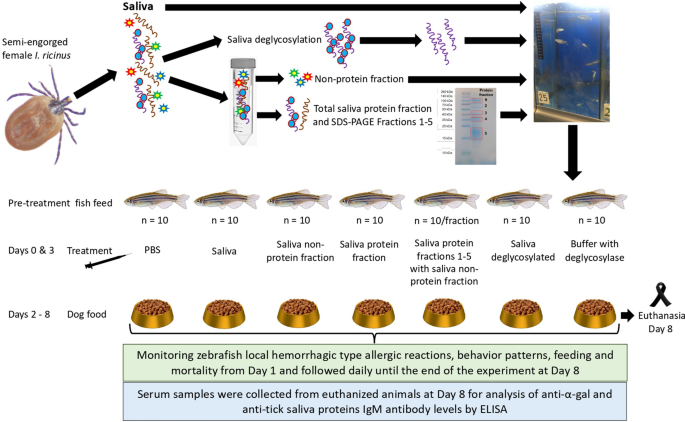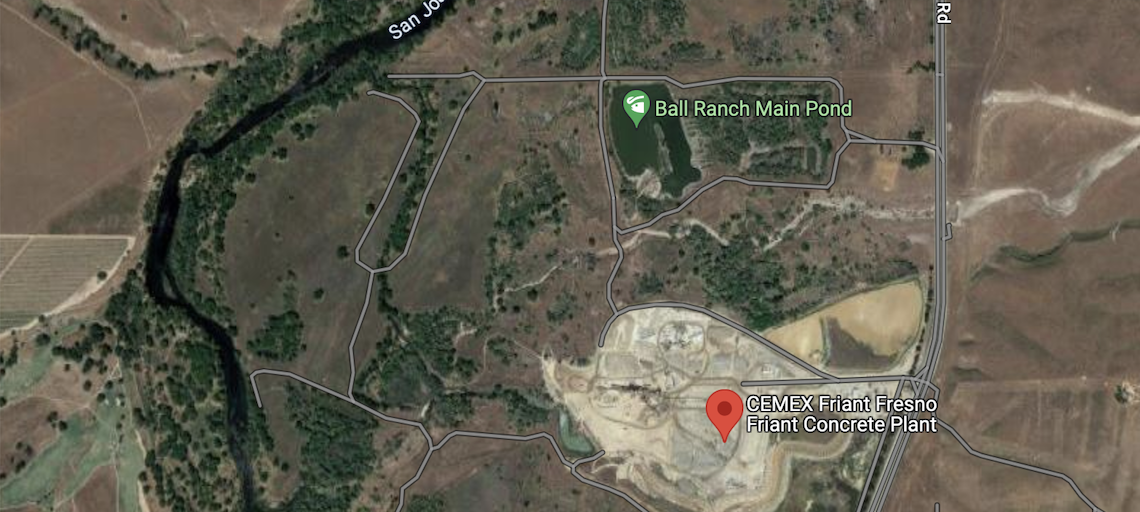Welcome to the exciting world of retail innovations! In this article, we’ll be diving into Pacheco’s pioneering approach to ecommerce and how they are revolutionizing the retail landscape. Pacheco is not your average retailer – they have taken a unique and innovative approach to providing an exceptional customer experience, leveraging advanced technology, and incorporating sustainable practices.
Whether you’re a retail enthusiast, a business owner looking for inspiration, or simply someone interested in the latest trends in ecommerce, this article is for you. Get ready to explore Pacheco’s fascinating history, learn about their core values and philosophy, and discover their vision for the future.
So, grab a cup of coffee, sit back, and let’s embark on this exciting journey to uncover the secrets behind Pacheco’s success in the ecommerce industry.
Understanding Pacheco
Pacheco, a leading retail pioneer, has made significant strides in the ecommerce industry with its innovative approach. In this section, we will dive into the history and background of Pacheco, their core values and philosophy, and their vision for the future.
Pacheco’s History and Background
Pacheco has been in the retail industry for over 30 years, starting as a small family-owned business. What began as a humble local store has now expanded into a global retail giant. Pacheco’s rich history and experience have allowed them to establish a strong foundation and deep understanding of customer needs and preferences.
Their Core Values and Philosophy
At the heart of Pacheco’s success lies their unwavering commitment to excellence and customer satisfaction. Their core values of integrity, quality, and innovation permeate through every aspect of their business. Pacheco believes in building long-term relationships with their customers, suppliers, and partners based on trust and mutual benefits.
Their Vision for the Future
Pacheco is not content with resting on their laurels; they have a clear vision for the future. They seek to constantly evolve and adapt to the changing retail landscape. Pacheco envisions leveraging technology, embracing sustainability, and embracing seamless multichannel integration to deliver unparalleled value and convenience to their customers.
Pacheco’s innovative spirit and customer-centric approach have set them apart in the retail industry. In the next section, we will explore how they have revolutionized the ecommerce landscape.
Revolutionizing the Ecommerce Landscape
In today’s digital age, ecommerce has become an integral part of our daily lives. As more and more consumers turn to online shopping for convenience and accessibility, retailers are constantly striving to enhance the customer experience and stay ahead of the competition. One company that has been at the forefront of revolutionizing the ecommerce landscape is Pacheco. With their pioneering approach and innovative strategies, they have set a new benchmark for success in the industry.
Redefining the Customer Experience
Pacheco understands that the key to winning over customers lies in providing an exceptional experience. They have invested heavily in understanding consumer behavior, preferences, and pain points. By doing so, they are able to personalize the shopping journey and deliver products and services that align with individual needs. Pacheco goes above and beyond to exceed customer expectations, ensuring that every interaction leaves a lasting impression.
The Use of Advanced Technology
To stay ahead in the ecommerce game, Pacheco leverages advanced technology to optimize their operations and deliver seamless experiences. From artificial intelligence and machine learning to virtual reality and augmented reality, they are constantly exploring new ways to enhance user engagement. These technologies not only improve the overall shopping experience but also enable Pacheco to offer innovative features like virtual try-on, personalized recommendations, and interactive product catalogs.
Innovative Supply Chain Management
Pacheco understands the importance of a well-optimized supply chain in ecommerce success. They have implemented advanced supply chain management systems that enable efficient order processing, inventory management, and fulfillment. By streamlining their operations, Pacheco ensures that customers receive their orders in a timely manner, thereby increasing satisfaction and loyalty.
Streamlining Operations and Logistics
Efficient logistics and operations are crucial for the success of any ecommerce business. Pacheco has invested in state-of-the-art warehouses, automated order fulfillment processes, and a robust logistics network to ensure that orders are processed quickly and accurately. This streamlined approach not only saves time and cost but also enables Pacheco to scale their operations seamlessly, catering to a growing customer base.
With their pioneering approach and innovative strategies, Pacheco has successfully transformed the ecommerce landscape. They have set new standards for customer experience, leveraged advanced technology, optimized supply chain management, and streamlined their operations and logistics. In doing so, Pacheco has become a trailblazer in the industry and continues to shape the future of ecommerce.
“Pacheco’s commitment to redefining the customer experience and leveraging advanced technology has set them apart in the ecommerce industry.”
Pacheco’s Unique Selling Proposition
When it comes to the ecommerce landscape, Pacheco stands out with its unique selling proposition. Here are some key aspects of their approach that set them apart from the competition:
Personalized Recommendations
Pacheco prides itself on providing personalized recommendations to its customers. By leveraging data and analytics, they are able to understand individual preferences and interests. This allows them to offer tailored suggestions that match the unique needs of each customer. Whether it’s suggesting similar products, complementary items, or personalized promotions, Pacheco ensures that the customer feels seen and understood.
Exceptional Customer Service
Customer service is a top priority for Pacheco. They believe in going above and beyond to deliver exceptional service throughout the customer journey. From prompt and helpful responses to inquiries, to quick and hassle-free returns, they strive to make each interaction a positive one. By providing outstanding customer service, Pacheco builds trust and loyalty with its customers, creating long-lasting relationships.
Sustainable and Ethical Practices
Another aspect of Pacheco’s unique selling proposition is its commitment to sustainability and ethics. They prioritize partnering with suppliers who share their values and adhere to ethical business practices. By offering eco-friendly products, supporting fair trade, and implementing sustainable packaging practices, Pacheco demonstrates its dedication to creating a more sustainable future. This resonates with conscious consumers who prioritize purchasing from brands that align with their values.
Pacheco’s unique selling proposition sets them apart in the ecommerce industry. Their personalized recommendations, exceptional customer service, and commitment to sustainability and ethics make them a standout choice for consumers.
The Power of Data and Analytics
In today’s fast-paced and highly competitive business landscape, data and analytics play a crucial role in driving success. Pacheco, a pioneering retail innovator, understands the power of data and analytics and leverages them to gain a competitive edge in the ecommerce industry. In this section, we will explore how Pacheco utilizes data and analytics to make informed business decisions and enhance the customer experience.
Data-Driven Decision Making
At the core of Pacheco’s approach is data-driven decision making. They understand that data holds valuable insights that can guide their strategic initiatives and help them stay ahead of the curve. By analyzing customer behavior, market trends, and sales patterns, Pacheco can identify which products are popular, determine the best pricing strategies, and optimize their inventory management.
Data-driven decision making allows Pacheco to make informed choices based on objective evidence rather than relying solely on intuition or guesswork. This approach ensures that they are constantly adapting and refining their business strategies to meet the ever-changing needs and preferences of their customers.
Optimizing User Experience
Pacheco knows that a seamless and enjoyable user experience is essential for driving customer satisfaction and loyalty. By analyzing user data, they gain insights into how customers interact with their website, what products they are interested in, and how they navigate through the online shopping journey.
These insights enable Pacheco to make data-backed changes to their website design, layout, and user interface, resulting in an enhanced user experience. From personalized product recommendations to intuitive search features, Pacheco understands that by leveraging data and analytics, they can create a tailored and delightful shopping experience for their customers, ultimately leading to increased sales and customer loyalty.
Predictive Analytics for Inventory Management
One of the challenges faced by ecommerce retailers is managing inventory effectively. Pacheco tackles this challenge head-on by utilizing predictive analytics. By analyzing historical data on product demand, as well as external factors such as seasonality and market trends, Pacheco can accurately forecast future demand and optimize their inventory levels.
This approach allows them to minimize stockouts, reduce excess inventory, and ensure that they have the right products available when customers need them. By using predictive analytics to optimize inventory management, Pacheco ensures that they can meet customer demand efficiently, improving overall customer satisfaction while also reducing costs.
The power of data and analytics in retail cannot be overstated. Pacheco’s commitment to using data to drive decision-making and enhance the customer experience sets them apart from their competitors. By leveraging data-driven insights, Pacheco can make informed choices, optimize their user experience, and manage their inventory effectively, all of which contribute to their continued success in the ecommerce industry. So, the next time you shop with Pacheco, know that the products and personalized recommendations you see are backed by a wealth of data and analytics, ensuring a seamless and enjoyable shopping experience.
Seamless Multichannel Integration
In today’s digital age, consumers expect a seamless shopping experience across multiple channels. Whether it’s online, in-store, or on mobile, retailers need to ensure that their customers can shop whenever and wherever they want. Pacheco, a retail innovator, understands the importance of seamless multichannel integration and has implemented strategies to cater to the evolving needs and preferences of their customers.
Pacheco recognizes the power of online platforms and marketplaces in reaching a wider audience and expanding its customer base. By leveraging popular e-commerce platforms such as Amazon and eBay, Pacheco can showcase its products to millions of potential customers. This not only increases their visibility but also provides a convenient and accessible way for customers to purchase their products.
Brick-and-Mortar Experience
While online shopping continues to grow in popularity, Pacheco understands the value of a brick-and-mortar experience. They have invested in creating physical stores that embody their brand identity and provide a unique shopping experience to their customers. These stores are designed with the latest technology and interactive displays, allowing customers to explore and interact with products before making a purchase.
Mobile Commerce and App Development
As more consumers rely on their smartphones for shopping, Pacheco has embraced mobile commerce and developed its own mobile app. The app provides a personalized shopping experience, allowing customers to browse products, make purchases, and track their orders seamlessly. By integrating their online and offline channels, Pacheco ensures that customers can switch between devices without any disruptions.
“Our goal is to make the shopping experience as convenient and enjoyable as possible for our customers. By seamlessly integrating our online platforms, physical stores, and mobile app, we are able to provide a consistent and cohesive experience across all channels.” – Pacheco Team
The Benefits of Seamless Multichannel Integration
- Enhanced Customer Experience: Seamless multichannel integration allows customers to have a consistent and personalized experience regardless of the channel they choose to shop from. This enhances customer satisfaction and loyalty.
- Increased Reach and Sales: By being present on multiple channels, Pacheco is able to reach a wider audience and increase its sales potential. Customers have the flexibility to shop in the way that is most convenient for them.
- Efficient Inventory Management: Seamless multichannel integration enables Pacheco to have real-time inventory visibility across all channels. This helps in optimizing stock levels and reducing the risk of stockouts or overstocking.
- Effective Marketing and Analytics: Integrated channels allow Pacheco to gather valuable data and insights about customer behavior and preferences. This data can be used to target customers with personalized marketing campaigns and improve overall business strategies.
In conclusion, Pacheco’s seamless multichannel integration strategy sets them apart from their competitors. By embracing online platforms, investing in the brick-and-mortar experience, and developing a mobile app, Pacheco ensures that their customers have a seamless and enjoyable shopping experience across all channels. This not only drives customer satisfaction and loyalty but also contributes to their overall business growth.
Creating a Sustainable Future
In today’s world, sustainability has become a significant concern for businesses across industries. Consumers are increasingly conscious of the environmental and social impact of their purchasing decisions, and they are looking for brands that align with their values. Pacheco, a retail pioneer, understands the importance of creating a sustainable future and has integrated sustainability into their business practices. Let’s take a closer look at how Pacheco is leading the way in creating a sustainable future.
Environmental Stewardship
Pacheco is committed to minimizing their environmental footprint and preserving the Earth’s resources. Here are some of the initiatives they have implemented:
- Reducing carbon emissions: Pacheco has invested in energy-efficient technologies and practices to reduce their carbon footprint. They have implemented renewable energy sources, such as solar panels, in their facilities and have optimized their logistics to minimize transportation-related emissions.
- Waste reduction and recycling: Pacheco has implemented robust waste management systems to reduce waste generation and promote recycling. They focus on waste segregation and partner with recycling facilities to ensure that their waste is properly managed.
- Sustainable packaging: Pacheco is actively working towards using sustainable packaging materials. They prioritize recyclable and biodegradable packaging options and are investing in research and development to find innovative, eco-friendly packaging solutions.
Social Responsibility Initiatives
Pacheco understands that social responsibility goes beyond environmental sustainability. They believe in making a positive impact on society and improving the well-being of communities. Here are some of the social responsibility initiatives undertaken by Pacheco:
- Fair trade practices: Pacheco prioritizes fair trade practices by working directly with farmers and suppliers and ensuring fair wages and working conditions. They believe in building long-term partnerships based on trust, transparency, and mutual benefit.
- Ethical sourcing: Pacheco is committed to sourcing products from suppliers who adhere to ethical practices. They prioritize suppliers who maintain high standards of labor rights, human rights, and ethical business conduct.
- Supporting local communities: Pacheco actively supports local communities through various initiatives, including donations, sponsorships, and volunteering. They believe in giving back to the communities that support their business.
Community Engagement and Support
Pacheco understands the importance of building strong relationships with their customers and the communities they serve. They actively engage with their customers and support local initiatives. Here’s how they foster community engagement:
- Customer involvement: Pacheco believes in listening to their customers and involving them in decision-making processes. They actively seek feedback and suggestions to improve their products and services, ensuring that they meet the needs and preferences of their customers.
- Community partnerships: Pacheco collaborates with local organizations and non-profits to support community development. They prioritize partnering with organizations that align with their values and focus on areas such as education, healthcare, and environmental conservation.
- Events and initiatives: Pacheco organizes events and initiatives that bring the community together. From workshops and educational programs to fundraising events, they foster a sense of community and encourage active participation.
By prioritizing sustainability, social responsibility, and community engagement, Pacheco is not only creating a better future for the planet and society but also building a strong and loyal customer base. Their commitment to these values sets them apart from their competitors and helps them make a positive impact in the world.
“At Pacheco, we believe that creating a sustainable future is not just the right thing to do; it’s also good for business. We are committed to reducing our environmental footprint, supporting ethical practices, and engaging with our community. Together, we can make a difference.” – Pacheco’s Sustainability Statement.
Conclusion
In conclusion, Pacheco’s pioneering approach to ecommerce has set them apart as an industry leader in retail innovation. By redefining the customer experience, leveraging advanced technology, and implementing innovative supply chain management, they have revolutionized the ecommerce landscape. Their unique selling proposition of personalized recommendations, exceptional customer service, and sustainable practices further distinguishes them in the market.
Pacheco recognizes the power of data and analytics and utilizes them to make data-driven decisions, optimize user experience, and implement predictive analytics for inventory management. This enables them to stay ahead of market trends and meet the changing demands of their customers.
Seamless multichannel integration is another key aspect of Pacheco’s success. They have successfully integrated online platforms and marketplaces, brick-and-mortar experiences, and mobile commerce through app development. This provides their customers with a seamless and convenient shopping experience across multiple channels.
Furthermore, Pacheco is committed to creating a sustainable future. They prioritize environmental stewardship, engage in social responsibility initiatives, and actively support the communities they serve. This commitment resonates with modern consumers who are increasingly conscious of the impact their purchasing decisions have on the planet and society.
Overall, Pacheco’s pioneering approach to ecommerce is a testament to their drive for innovation and their dedication to providing exceptional experiences for their customers. As they continue to evolve and adapt to the changing retail landscape, Pacheco is well-positioned to remain at the forefront of retail innovation and set new standards for ecommerce success.
Frequently Asked Questions
- What is Pacheco’s pioneering approach to ecommerce?
Pacheco’s pioneering approach to ecommerce involves implementing innovative strategies and technologies to enhance the online retail experience. They focus on providing personalized recommendations, seamless omnichannel integration, and advanced logistics solutions.
- What are some of the innovative technologies used by Pacheco in their ecommerce operations?
Pacheco utilizes cutting-edge technologies such as AI-powered recommendation engines, virtual reality (VR) for enhanced product visualization, and predictive analytics for inventory management and demand forecasting.
- How does Pacheco’s personalized recommendation system work?
Pacheco’s personalized recommendation system utilizes machine learning algorithms to analyze customer behavior, purchase history, and preferences. It then suggests relevant products to each customer, leading to a more tailored and engaging shopping experience.
- What is the significance of omnichannel integration in Pacheco’s ecommerce approach?
Omnichannel integration allows customers to have a seamless shopping experience across various channels, including physical stores, websites, and mobile apps. Pacheco ensures consistent pricing, inventory availability, and customer service across all channels to enhance customer satisfaction and drive sales.
- How does Pacheco optimize their logistics for efficient ecommerce operations?
Pacheco optimizes their logistics operations by leveraging data analytics and automation. They use real-time tracking systems, route optimization algorithms, and warehouse management software to ensure fast and accurate order fulfillment and delivery.



